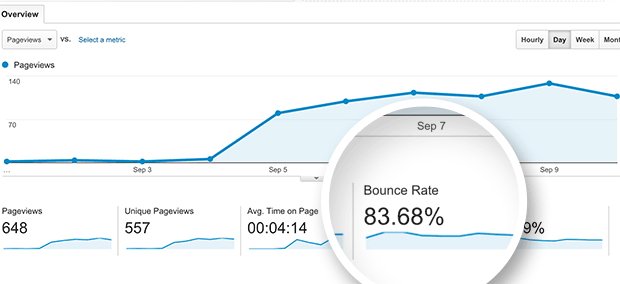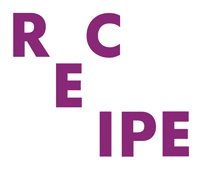Your website's bounce rate is the percentage of people who land on a page on your website, then leave. They don't click on anything else. They just get to one of your pages, then leave.

- Your website bounce rate is not the same as your email bounce rate - these are two different things.
- Keep in mind that a website's bounce rate is also different from a website's exit rate.
Bounce rates only measure "one-and-done" visits -- the ones in which people arrive and leave your website without navigating away from a single page. Here's what they look like in your HubSpot Web Analytics Dashboard.
In general, high bounce rates might indicate that the page is irrelevant or confusing to site visitors. Here's a quick benchmark reference guide to bounce rates.
QUICK BENCHMARK REFERENCE GUIDE : AVERAGE WEBSITE BOUNCE RATES
Retail sites: 20-40%
Service sites: 10-30%
Content websites: 40-60%
Looking more specifically at the type of pages you may have created;
Landing pages: 70-90%
Lead generation: 30-50%
Blogs: 70-98%
What should I do to improve my bounce rate?
Don't jump into drastic actions like deleting a page or undertaking a web redesign right away. Consider 'why'. Here are a few possible reasons why you may have an above-average bounce rate;
- Ensure your website is mobile-friendly. There are now more searches coming from mobiles than from desktops, and if your mobile user experience is poor, you'll also likely see a corresponding high bounce rate from mobile users.
- Consider site speed. If your website is slow to load, the likelihood is visitors may be 'bouncing' off your page before your content finishes loading. We've found this to be the case with websites hosted on WIX, as well as with websites that are video-heavy.
- Does your content meet the expectations of those who are clicking through to it? Consider source traffic to the page: are you delivering on expectations as to what people will see or learn when they land on the page? If you're not, it's easy to understand why prospects are bouncing.
- What is your pathway through to another page, from the page you're reviewing? If it's not clear what action your prospect should take next, it's understandable that they're not moving to another page.
- Review whether a pop-up form could be a good fit for the page you're reviewing. A pop-up form, with the offer of useful, valuable content, could be a great way to capture a lead: you can then move to 'nurture' this lead with more content using tools like email, and workflows.
Rather than focus on 'good' bounce rate and 'bad' bounce rate, create a SMART goal to improve your business' bounce rate, by an achievable percentage, by a specific date, and work toward achieving this goal.
